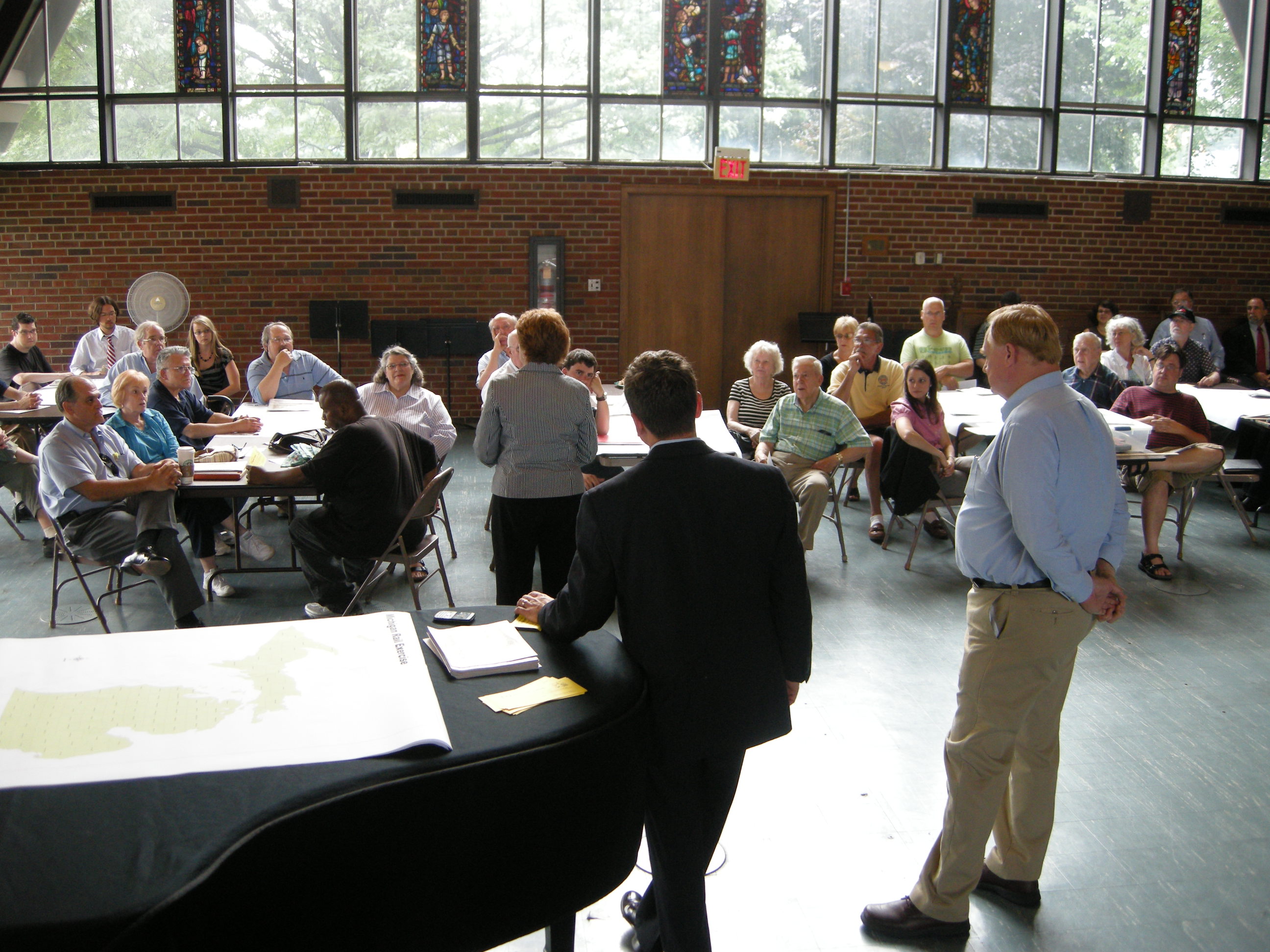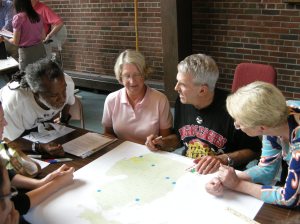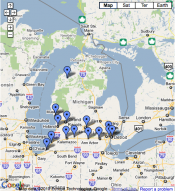| From local newspaper, the Rochester Citizen:
By Brian Marshall |
| A group of Royal Oak area citizens met with a handful of politicians on Monday in an attempt to jolt Michigan ’s mass transit system onto the right track.
A crowd of about 70 withstood the stuffy air inside St. John’s Episcopal Church for a two-hour forum discussing and brainstorming efforts to improve mass transit in Michigan , particularly rail traffic capabilities. Leading the thought-provoking effort were state Rep. Marie Donigan, D-Royal Oak; Tim Fischer of the Michigan Environmental Council; Royal Oak Mayor Jim Ellison; John DeLora of the Michigan Association of Railroad Passengers; and Angela Riess, environmental planner for Southeast Michigan Council of Governments. The session was largely interactive, with the audience breaking up into groups, each proposing its wishes for railroad routes and making cases for their choices. Several times during the supposed structured practices, individuals couldn’t refrain from pleading their personal frustrations or solutions. While many of the ideas appeared to have merit, none are going to be put into play anytime soon, thanks to the ever-present financial restraints. “It’s a slow process, as representative Donigan will tell you,” said Fischer. DeLora, who puts out the newsletter The Michigan Passenger, brought gasps when he reeled off this nifty fact: “The state constitution says that a minimum of 90 percent of transportation revenues have to be used on roads only.” That leaves 10 percent or less for developing new rails and improving existing ones. Added Donigan: “Write your congressman an e-mail saying that you want more rails and are willing to help pay for them.” DeLora, who says he goes back 40 years in his involvement with Michigan ’s rails, blames the state’s top post for the lag in producing a more effective transit system. “You don’t get action until you get a governor who makes it a priority,” he said. “We haven’t had a governor that did that since Gov. (William) Milliken.” The three major railway routes in the state consist of Port Huron to Chicago , with many stops in between, Grand Rapids to Chicago and Pontiac to Chicago . Some of the suggestions the attendees of the forum expressed were:
Turning single-lane tracks into double-lane options. After patiently watching and listening to the varied suggestions, a slight woman raised her hand and unleashed her frustrations with a torrent. “I need to go from Detroit to Cleveland and Philly to see family and I’m incensed with how hard that is,” said Eunice Rose. She even made up a word for her displeasure. “It’s angrifying,” she said. “It’s crazy that I have to sit here and talk about a system that is absolutely horrible.” Ms. Rose’s plea brought laughs and applause. Some of the common complaints of the current passenger system included, unreliable arrivals and departures; slow speeds; and a lack of auxiliary transportation, such as buses, when departing a train. “Once people get there, they have no car,” Donigan said. “We have to make sure we have those connections. We have to remember to have multi-modal transportation, not just rails.” One option officials are looking into – due largely to budget constraints – is making better use of freight tracks. “We’re going to explore existing freight rails to see if it’s feasible to add passenger trains,” Fischer said. “If we can use what’s already there to limit costs, it’s important to look into it,” Riess said. That sentiment pretty much summed up the evening. Great ideas for improving mass transit in Michigan are anything but scarce. Unfortunately the funds to do so are scarce, at least today. The small group of officials who sought input from “common folk” got it in abundance and hope to use the spirited banter to spur future growth in mass transit, convincing their political brethren to get on board. The forum tour will also be making stops in Grand Rapids , Traverse City , Lansing , Jackson , Holland , Detroit , Kalamazoo and Ann Arbor . |


